Every organization has a hierarchy within its ranks. This is a means of promoting the chain of command since, with it, everyone in the organization would be clear about who to obey. A hierarchy diagram or structure chart can be used to determine the positions within an organization. A chart of this kind displays the rankings from highest to lowest. Typically, it starts with the President position and works its way down to the maintenance jobs. You've come to the right place if you're curious about what this hierarchy diagram means. For more details on it, continue reading below.
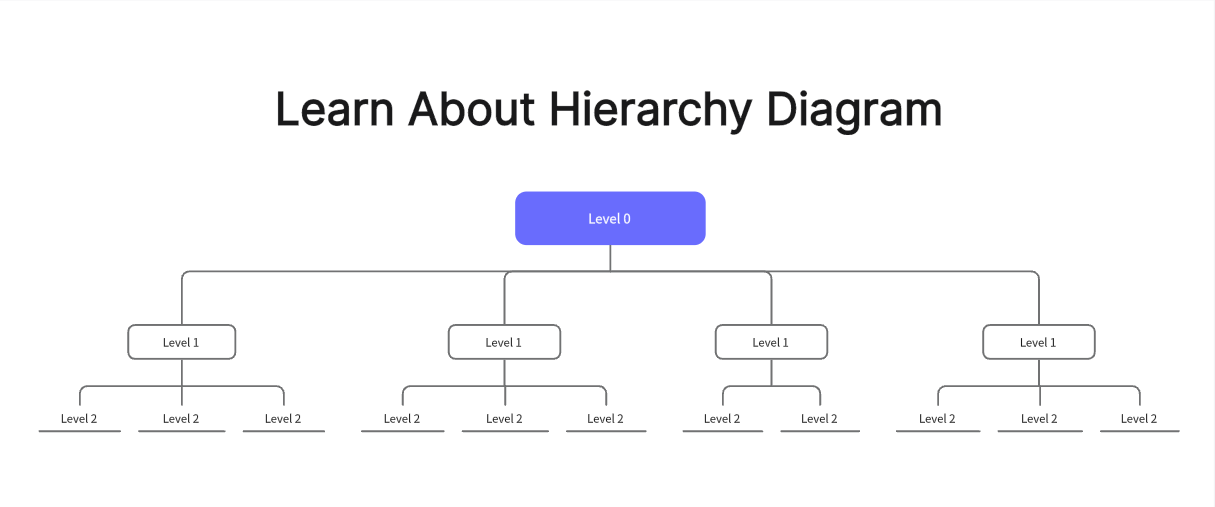
Start a Free Hierarchy Diagram
What Is Hierarchy Diagram
The term "hierarchy diagrams" refers to a visual depiction of a hierarchy and a hierarchy of levels in an organization. The division of a system or organization into its most controllable components is shown in a hierarchy diagram. It often features a left-right design and a top-down structure. It mostly displays the standing of particular group members. The graphic shows the relationships between the various positions in the group.
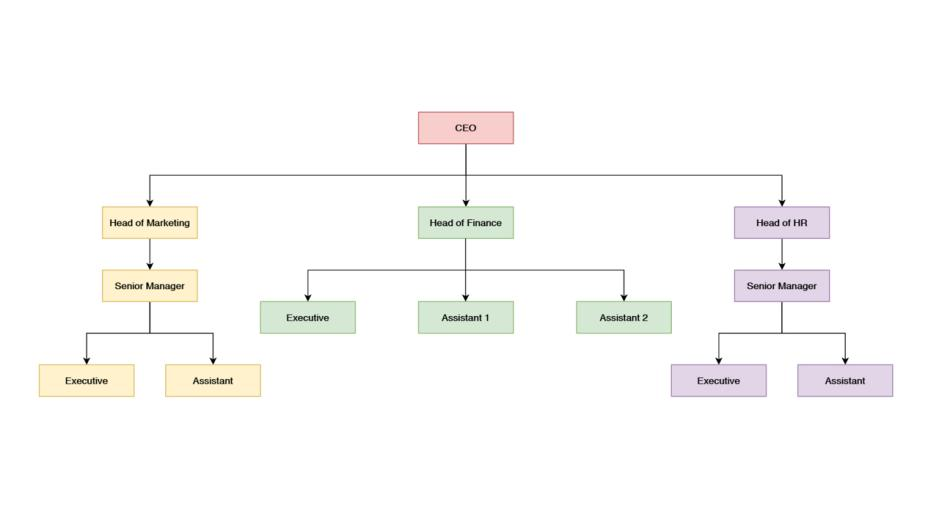
Source: Ayoa
The name is self-explanatory and derives from the notion of the hierarchy itself. However, hierarchy diagrams are not just for use by those working in an organization; they are also useful in software engineering. This kind of diagram is used by programmers to show the connections between program modules.
Rectangles in the diagram indicate various system entities, and lines will be used to connect them.
Pros and Cons of Hierarchy Diagram
When implemented properly, a hierarchy diagram may offer several advantages, which is why many of the top businesses worldwide have found it useful. Some of the main benefits are as follows:
Clear Levels of Control & Authority
Levels of authority and power in organizations with a hierarchical structure are very clearly defined. This implies that every employee, including supervisors at higher levels of the organizational hierarchy, will have a direct supervisor or manager to whom they answer.
This facilitates communication greatly and guarantees that staff members know exactly to whom they must report.
Clear Promotion Prospects
Employees can more easily understand the many lines of authority and how they can develop in the organization in the future by using a hierarchy diagram.
Employees will experience higher levels of morale and be more driven to work well, fulfill their goals, and contribute to the general productivity and profitability of the organization if they can see their possible promotion chances.
Better Team Focus
Different departments and teams are divided up within organizations with hierarchical systems. As a result, corporate culture is strengthened, and teamwork is given more importance, ensuring everyone is working toward the same objective.
Encourages Specialization
Employees in a hierarchical organization might specialize in a particular area through the numerous departments. A business can provide premium goods and services that set it apart from rivals by specializing.
At the same time, it's important to consider the key disadvantages of the hierarchy diagram:
Slow Decision Making
Things slow down as a hierarchical organization gets bigger. While having this much knowledge may appear advantageous, it can also lead to delayed actions. This effect is particularly strong when a quick decision is required to address an urgent business dilemma. This can be harmful in a dynamic company environment where efficiency is crucial.
Communication Problems
Employees who are divided into many divisions and levels may need to communicate better. Professionals can believe that communicating with other teams is unnecessary or that they do not have the means to do so. A hierarchical organization might avoid this problem by holding frequent cross-department meetings. Prioritizing communication within the organization encourages good teamwork and ensures there are always opportunities for departments to work together.
Team Conflict
The same departmental and team structures that can encourage a strong culture and teamwork can result in isolation and siloed thinking. This is due to the inherent isolation caused by the hierarchical structure, which hinders cooperation and communication between various departments and teams.
When to Use Hierarchy Diagram
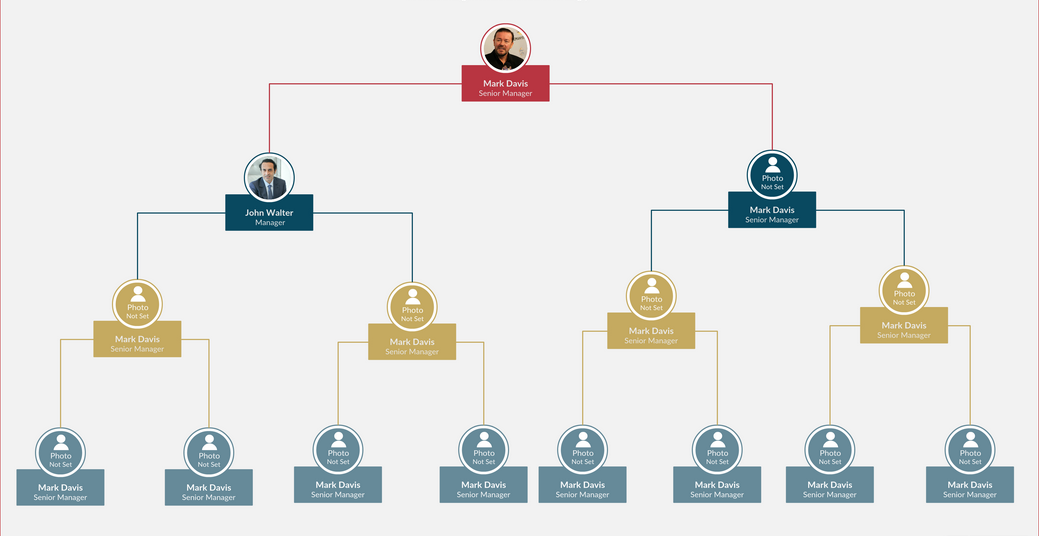
Source: Pinterest
Not all hierarchy charts are the same, and not every organization uses them similarly. Here are a few use cases to give you an idea of how modern hierarchy diagrams can be used by an organization to benefit it:
Onboarding of New Employees
It can be a difficult process for everyone involved to onboard new employees. It can raise more concerns than it resolves and is frequently highly slow and inefficient.
Therefore, being presented to dozens of individuals daily might easily overload and frustrate a new employee. This is where a hierarchy diagram comes in since it can be used to show new employees all of this information, including where they fit into the business. This is one of the most beneficial and typical uses for hierarchy diagrams.
Keeping Remote Workers Updated & Engaged
Keeping remote workers engaged and cooperating with office-based employees is one of the main issues businesses face with this type of workforce. However, a hierarchy diagram is one method an organization can use to bring separated teams closer together because every employee can access information about their coworkers at all times. As a result, they can easily find the people they're looking for, their pictures, profiles, and other information, and establish more intimate connections with them.
Because it is so much simpler for everyone, employees are also much more likely to use a hierarchy diagram to get the information they require than email or talk with other coworkers.
Strategic Planning and Efficiency Improvements
For the purpose of organizational planning, hierarchy charts are excellent. This can be used in various contexts, including organizational design and staffing (by assisting in identifying skills gaps) (by helping to identify when a re-structure might be needed.)
Hierarchical structures let specialized expert workers with specialized skill sets complete their responsibilities more quickly and confidently, which promotes operational efficiency.
How to Create a Hierarchy Diagram
Drawing a hierarchy diagram can be difficult if you have no handy tools that can help you simplify the whole process. That's why Boardmix is created for making diagramming much easier than ever.
Start a Free Hierarchy Diagram
Still hesitate? Let's create a hierarchy diagram on Boardmix and see how quick and efficient it is.
Step 1: Pick Out a Structure or Template
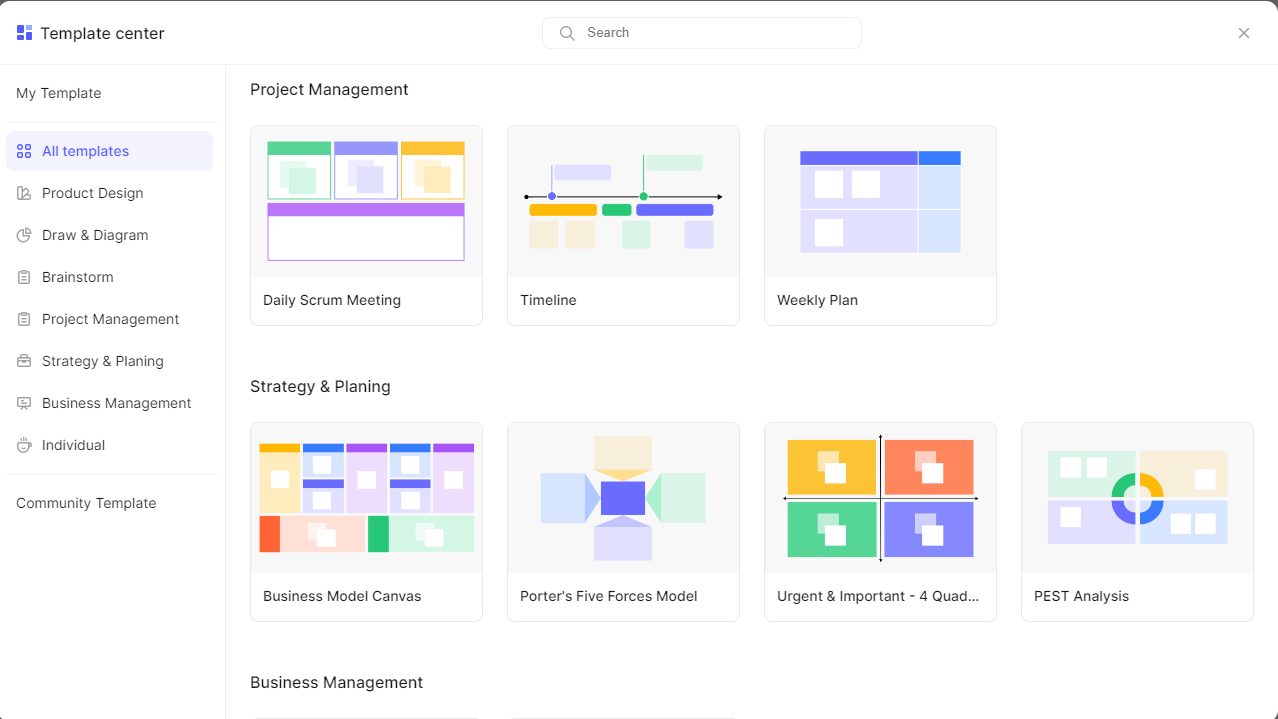
How you respond to these questions will determine the structure or whether your organizational chart will reflect a more hierarchical or flat business culture:
- How is decision-making?
- Which departments participate?
- Do individuals have multiple roles?
- Are teams cross-functional?
Step 2: Map Out Roles in the Structure
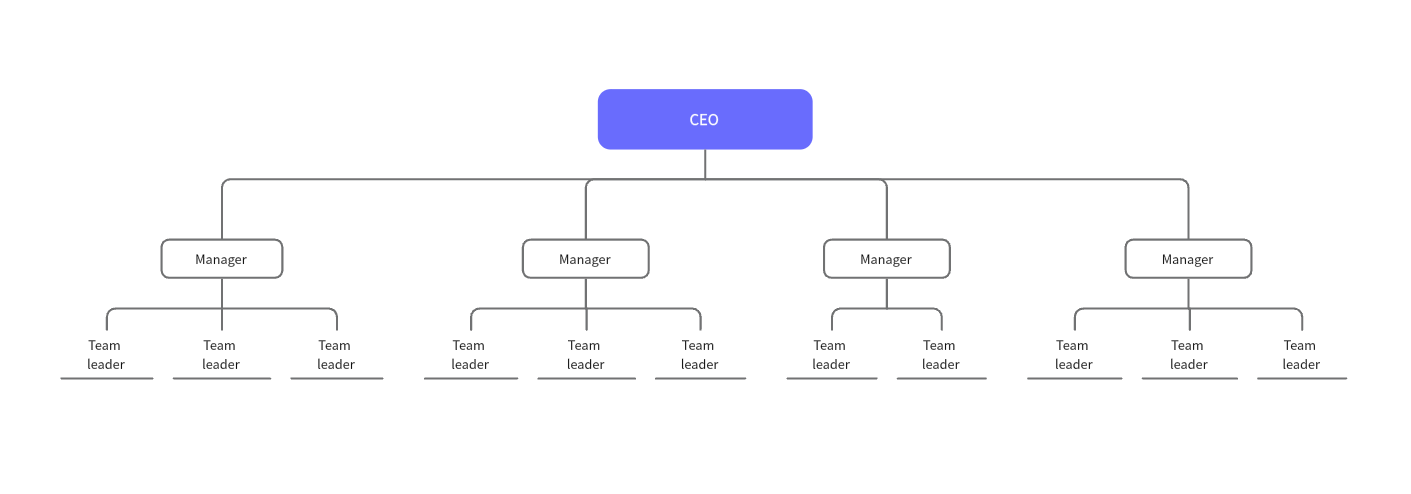
Sketching out the responsibilities and positions held by each employee inside the company is essential while learning how to create an organizational chart. When you build a database, you may begin entering the data in your chart by the previously selected structure.
Step 3: Connect Roles and Departments
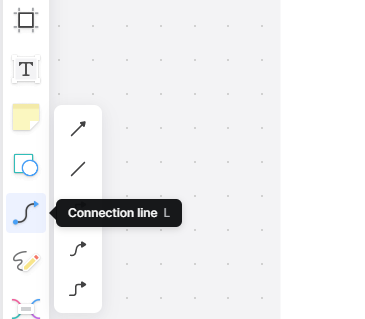
Your Boardmix connector lines can be used to follow the responsibility flows between each role and department. Be sure to emphasize who reports to whom and how the departments and roles interact.
Step 4: Iterate When Necessary
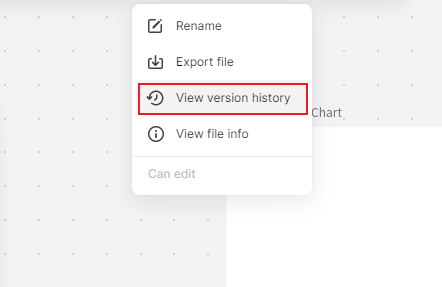
You can iterate as often as necessary now that your framework has been established. Keep in mind that the hierarchy diagram chart is a dynamic document, and invite your colleagues to work with you and make adjustments following the requirements of your firm.
Hierarchy Diagram Examples
Example 1
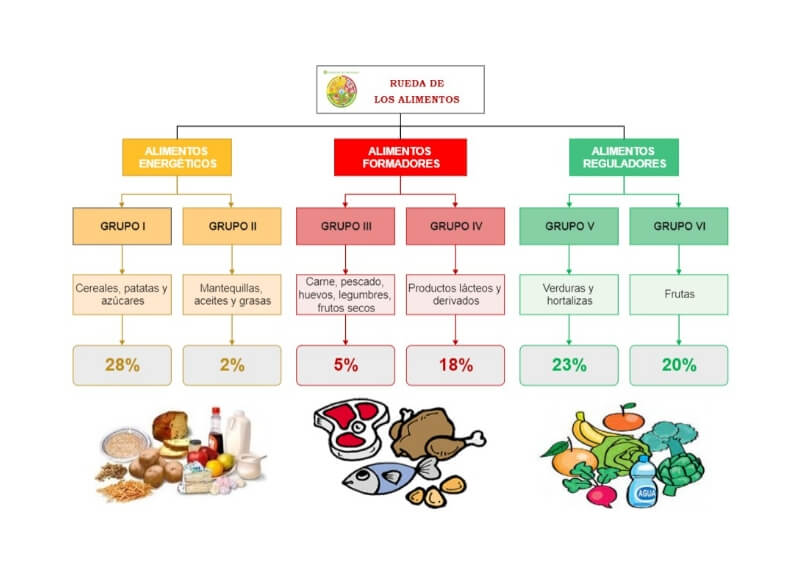
Source: Edrawmax
This is an illustration of a food hierarchy diagram. It is also known as the "food wheel" since it allows you to rank different foods worldwide according to their carbohydrate, fat, and fiber contents. It enables you to comprehend which foods are better for you to eat and which cause you to have a higher fat percentage. These charts help those who want to eat healthily design an ideal diet that will enable them to receive all the nutrients they require without overeating.
Example 2
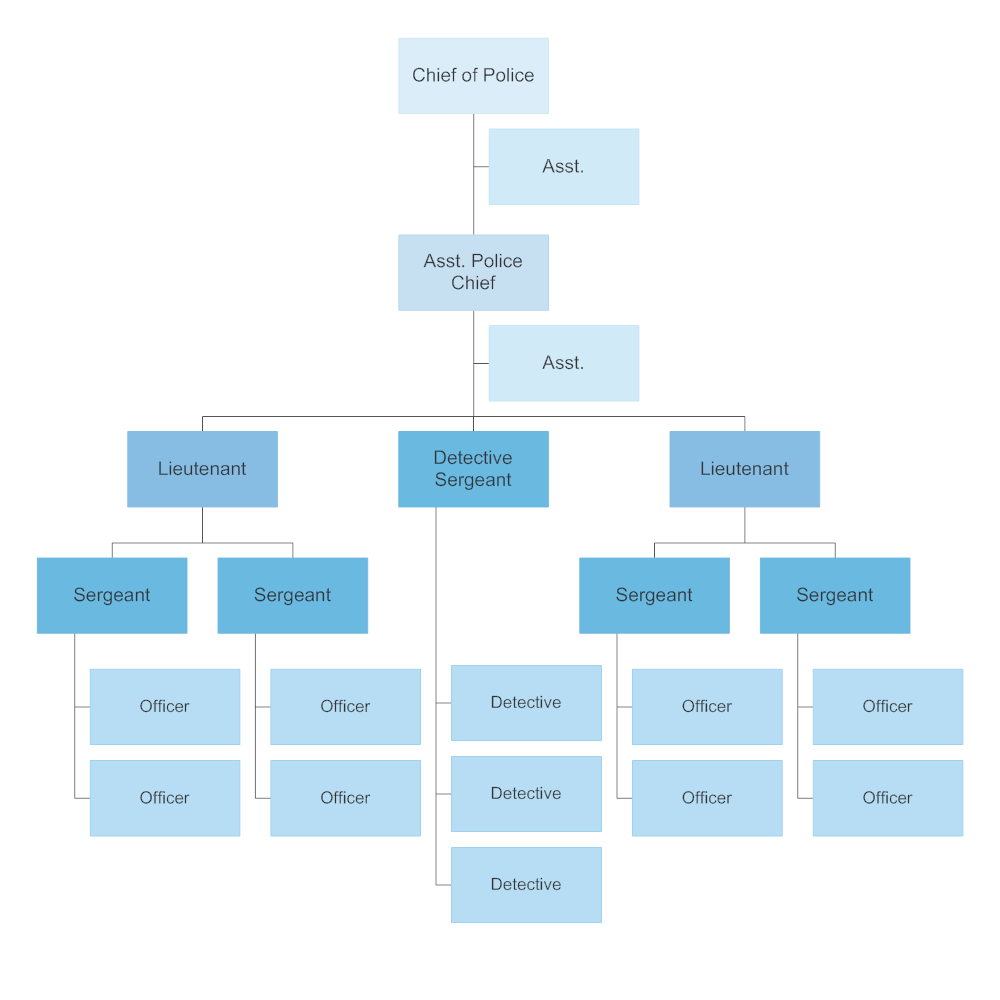
Source: Smartdraw
The organizational structure of a police department is depicted in this example's hierarchy diagram, which also illustrates the links and command chains within a hierarchy. The lieutenant follows direct commands from the police chief, who is in charge. One is in charge of the patrol sergeants, while the other is the detective sergeant. The lowest hierarchy level in the example is represented by detectives and patrolmen. The diagram makes it simple to comprehend the elements and connections that make up the police system.
Example 3
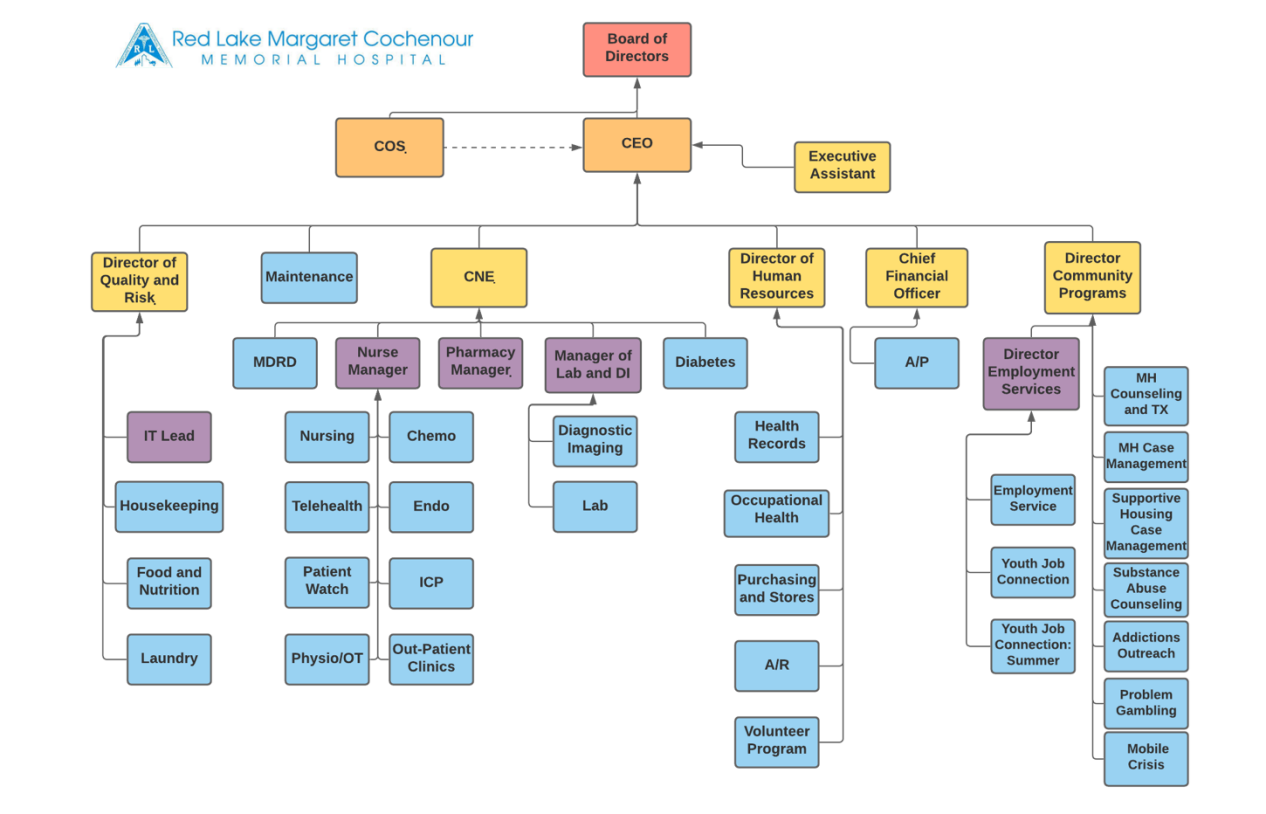
Source: Redlakehospital
Here is an illustration of a hospital hierarchy diagram. It symbolizes the organizational framework and internal organization of a hospital. Despite being an organizational chart, it differs from those that show the organizational structures of businesses and other organizations. The organizational chart lists every significant figure in the hospital hierarchy, from the highest-ranking managing director to the lowest-ranking employees.









